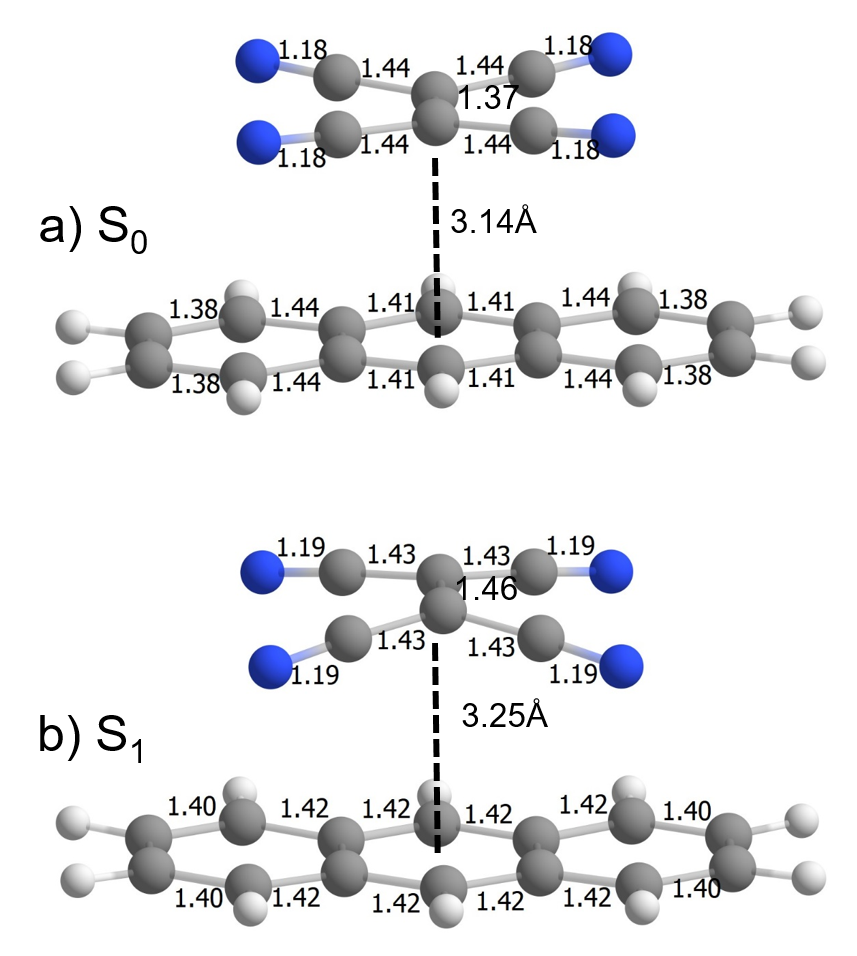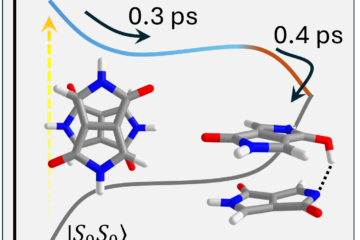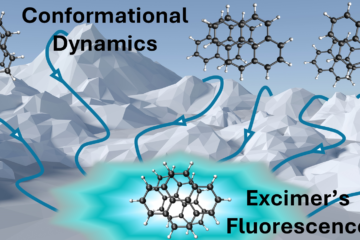Protic environment creates an ion-pair CT ground state.
In brief:
- We studied the nonadiabatic dynamics of tetracyanoethylene(TCNE) / anthracene complex in the gas phase and water.
- In gas, the original neutral ground state is recovered within a few picoseconds.
- In water, an ion-pair ground state is formed within the sub-picosecond scale.
The goal of the present work is to perform a photodynamical characterization of the radiationless deactivation of the tetracyanoethylene(TCNE) / anthracene complex to the ground state.
The motivation for the choice of this complex is that it is a prototype for studying events starting from a locally excited (LE) state followed by the internal conversion to lower-lying CT states and final decay to the ground state.
In a project executed by Farhan Siddique and coordinated by Hans Lischka, we have performed surface hopping QM/MM dynamics simulations for the TCNE/anthracene complex to investigate the evolution of CT states after excitation into a LE state of anthracene. The scaled opposite-spin (SOS) ADC(2) was used to achieve a balanced description of LE and CT states.
We did the calculations in the gas phase and water (described by a MM environment). The two dynamics variants show strongly different behavior.
Even though in both cases, the conversion from the LE state to lower-lying CT states occurs with 100 fs, in the gas phase, the complex remains in the excited states for longer than 2 ps while it returns to the ground state within 0.5 ps in water.
Moreover, while in the gas phase the original neutral equilibrium structure should be recovered, in water, the ion-pair CT state is strongly stabilized, creating a new competing ground-state isomer. Thus, we predict that the ground state of the complex in water should be composed of two species, the original neutral state, and an ion-pair state.
The existence of an ion-pair ground state in strongly polar environments opens interesting possibilities for the design of efficient charge-separating organic donor-acceptor interfaces.
MB
Reference
[1] F. Siddique, M. Barbatti, Z.-H. Cui, H. Lischka, and A.J.A. Aquino, Nonadiabatic Dynamics of Charge-Transfer States Using the Anthracene-Tetracyanoethylene Complex as Prototype, J. Phys. Chem. A DOI:10.1021/acs.jpca.0c01900 (2020).




